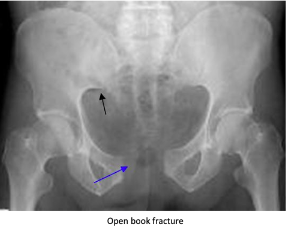You're in a hectic trauma, the patient is stabbed all over the chest and loses pulses. You crack open the chest. In the chaos, a surgery resident (she-who-will-not-be-named) nicks your palm with a suture needle. You inspect your hand and...shoot, it's definitely a needle stick. Sigh.
So what is my actual risk?
High risk:
- inoculation from deep or wound
- stick with a hollow bore needle/needle used for blood draw
Low risk:
- suture needle
- discarded needle
No risk:
- unused needle
- no break in skin
What bloodwork should I get?
From both the source patient and the exposed patient you will need:
Hep B surface antigen
Hep C antibody
HIV 1/2 Antibody
CBC, BMP, LFT, and UHCG
What exactly is the risk of transmission?
Thankfully, the risk of transmission from a positive source is fairly low!
HIV: 1 in 300, or approximately 0.3%
Hepatitis C: 1.8%, although studies have shown up to 7%
Hepatitis B: Rates vary depending on infectiousness of source patient and whether the exposed patient is vaccinated. prior to vaccinations, infectious rates could be as high as 30-60%. Full vaccination against hep B can reduce transmission to as little was 1-6%. Vaccination is the best protection against Hepatitis B transmission!
So who really needs PEP? and how effective is PEP against transmission?
the answer to that is it depends, and pretty darn effective!
Hepatitis B PEP:
- Hepatitis B immunoglobulin with vaccination series
- Decreases risk of infection by 75%
- If source patient has unclear or positive, the following should be done:
If exposed patient is fully vaccinated, no PEP is required
if exposed patient is not fully vaccinated or nonresponder, must be started on PEP
- initiate ASAP. Unknown effectiveness after 7 days post-exposure
- if exposed patient is unvaccinated, they should be initiated on hepatitis vaccination series regardless of status of source patient
HIV PEP:
- triple cocktail (preferred): Truvada (Tenofovir 300 mg + Emtricitabine 200 mg) + Raltegavir 400 mg BID
- 2nd line: nucleoside Reverse Transcriptase Inhibitor + (Integrase vs Protease vs non-nucleoside reverse transcriptase inhibitor)
- decreases risk of infection by 80%
- initiate ASAP, unknown effectiveness after 72 hours
- 28 day regimen. our pharmacy can give 1 week supply and f/u ID for rest of regimen
Hepatitis C PEP:
- sadly none exists, and no vaccines exist. bummer. Best management is close followup and continuous blood work
Regardless of exposure risks, patients should be followed up with ID in 48 hours for further testing!






